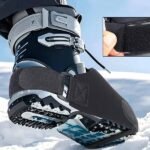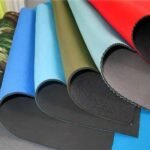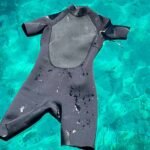Selecting the right size for a neoprene knee sleeve is essential for comfort, support, and functionality. A poorly fitted knee sleeve can reduce its effectiveness and even cause discomfort. Measuring correctly ensures you get the best performance, whether you need it for sports, recovery, or daily wear.
To measure for a neoprene knee sleeve, you need to understand the right techniques, tools, and size guidelines. Accurate measurements lead to better support, enhanced mobility, and improved confidence in your knee sleeve’s performance.
Let’s explore the steps and tools required to measure correctly, along with insights into size standards and sleeve types.
How Do I Know What Size Knee Support I Need?
To determine the size you need, measure the circumference of your knee and surrounding areas according to specific guidelines. This ensures the knee sleeve fits snugly without restricting movement or circulation.
The size of a knee support is based on precise measurements of the knee joint and sometimes the calf and thigh. Knowing your activity level and intended use also helps in selecting the correct size.
Key Points to Consider
- Measure both legs to account for size differences.
- Determine if you prefer a tighter fit for compression or a looser fit for comfort.
- Refer to manufacturer size charts for specific brands and models.
Which Tools Do You Need to Measure for a Neoprene Knee Sleeve?
A soft measuring tape, a flat surface, and a notepad are all you need to accurately measure for a neoprene knee sleeve.
Having the right tools ensures you can take precise measurements without errors. If you don’t have a soft measuring tape, a string and ruler can work as an alternative.
Tools Checklist
- Soft Measuring Tape: Flexible and easy to wrap around the knee and surrounding areas.
- Flat Surface: Sit or stand comfortably for steady and accurate measurements.
- Notepad or Smartphone: Record measurements immediately to avoid forgetting details.
- Mirror (Optional): For better visibility when measuring on your own.
How Do You Measure for a Neoprene Knee Brace?
Start by measuring the circumference of your knee at the center of the kneecap, then measure above and below the knee for additional guidance.
Step-by-Step Instructions
- Prepare Your Leg: Sit or stand with your leg straight but relaxed.
- Measure the Knee Circumference: Wrap the tape around the center of your kneecap. Ensure it’s snug but not too tight.
- Measure Above the Knee: Place the tape about 4 inches (10 cm) above the kneecap and record the circumference.
- Measure Below the Knee: Place the tape about 4 inches (10 cm) below the kneecap and record this measurement.
- Compare Measurements: Use the largest circumference to determine the best size according to the manufacturer’s size chart.
What Are the Standard Sizes for Neoprene Knee Sleeves?
Neoprene knee sleeves typically come in sizes ranging from small (S) to extra-large (XL), with specific measurements for each size.
Manufacturers often provide detailed size charts, but most follow general guidelines based on knee circumference. For example:
- Small (S): 12–14 inches (30–36 cm)
- Medium (M): 14–16 inches (36–41 cm)
- Large (L): 16–18 inches (41–46 cm)
- Extra-Large (XL): 18–20 inches (46–51 cm)
Common Challenges
- Different brands may have varying size standards.
- Body shape and swelling may affect the ideal size.
Is There a Difference Between Measuring for Different Types of Knee Sleeves?
Yes, compression sleeves, hinged braces, and standard neoprene sleeves each require slightly different measurement techniques.
Types of Knee Sleeves
-
Compression Sleeves:
- Focus on the snug fit for compression benefits.
- Measure the exact circumference of the knee for an accurate fit.
-
Hinged Braces:
- Often include additional measurements for calf and thigh.
- Designed for post-injury support or advanced sports use.
-
Standard Neoprene Sleeves:
- Simple measurements of knee circumference are usually sufficient.
- Designed for general support and insulation.
Key Considerations
- Check the purpose of the sleeve (e.g., recovery, sports, daily use).
- Follow the specific guidelines provided by the manufacturer for each type.
Conclusion
Measuring correctly for a neoprene knee sleeve is essential for ensuring optimal support and comfort. By using the right tools and techniques, you can find a knee sleeve that fits perfectly, enhances your performance, and provides the support you need. Whether for injury recovery or athletic use, knowing your size and the differences between sleeve types helps you make an informed choice.
At Szoneier, we specialize in high-quality neoprene products, including customizable knee sleeves tailored to your specific needs. Contact us for more information on our products and services.











